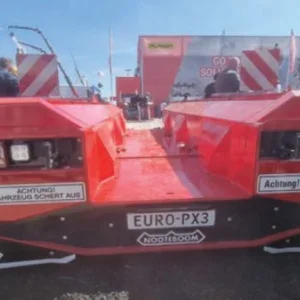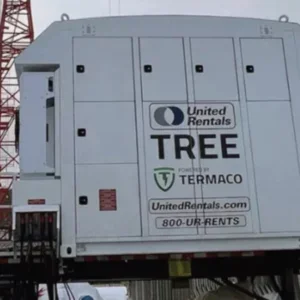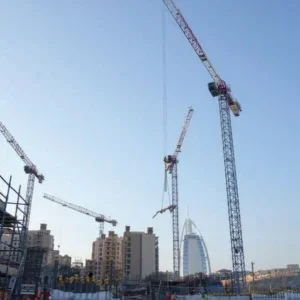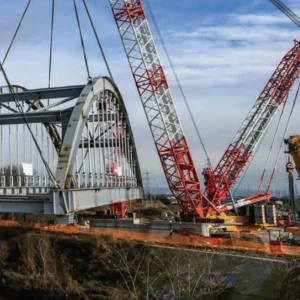Amco Veba was founded a couple of villages away from Piacenza, where it is now headquartered. Cranes Today met MD Giancarlo Perego at the company’s modern administrative HQ, before touring the neighbouring fabrication facility.
In the 1980s Amco Veba was part of Copma, one of the giants of the Italian knuckleboom crane business at the time.
While Copma used its own branding on cranes in the (big for those days) 7–8tm range, smaller 3–4tm cranes were sold as Amco Vebas.
In the mid-1990s, Perego was working with F’lli Ferrari. “We had,” he says, “different strategic views.” When the opportunity came to buy Amco Veba, in 1995, Perego quit F’lli Ferrari and bought the firm. One can only conclude that it was he who had the correct strategic vision: in 2004, F’lli Ferrari was in financial trouble, and Perego was able to buy that business too.
Perego sees value in both brands: “When we started developing Amco Veba, the idea was to offer something different. We aimed for a quality product at a competitive price. F’lli Ferrari is viewed more as a top brand. The average price of a F’lli Ferrari crane is higher, but they offer more bells and whistles.”
In 2006, Perego made another deal, this time with Hyva Group; it meant losing sole control of Amco Veba/F’lli Ferrari, but it gave him a stake in the expanded group, and, more importantly, gave his brands access to Hyva’s established international sales and support network.
“Hyva has branches in China, India, and Brazil. Over there, you can’t just go looking for a dealer. The future for us in these emerging countries is to have branches there. What has happened with the economy, happened with perfect timing for us; we thought the big opportunities lay outside Europe, outside of mature markets.
“The world’s economy has changed. While Europe is stuck completely, we’ve seen huge increases in China and the Far East. But, these markets are not used to these products. In these countries, as labour becomes more expensive, the product becomes more competitive. It’s not like in Europe, where the crane owners are looking for more and more types of jobs. They just want to be able to load and unload.
“I asked our technical department to come up with a crane that was 20% cheaper, but with the same capacity. This is our Project 100.
“The first crane in the Project 100 range was the 103, with 3tm capacity. It is designed to be used on a 3.5t commercial truck, so it can be driven without any special driver’s licence.
“The 103 is extremely well priced. Based on its success, we decided to build the Project 100 line from 3tm to 20tm. The 103, 105 (5tm) and 108 (8tm) are already in production. The 111, 115 and 120 are coming soon.
“We used high tensile steel from Ruukki in Finland, delivered ready shaped [as two standard dimension upper and lower shells, rather than cut, bent and welded as needed to precise measurements for specific sections]. We just need to cut it to the length we need, then use it, for the base, stabilisers, column, and the square section of the boom.
“The crane is designed in a new inline configuration, rather than having the boom offset from the column and it needing to be strengthened. That makes the crane very light, and very compact.
“It reduces the total system length slightly, but as it is aimed at the loader market, system length is not an issue. We only use three extension sections, so the crane is stronger, with 12% more lifting capacity”
The focus throughout has been on making a high-capacity value product, using readily available structural components. On the recently launched eight tonne metre 108, for example, using the shells from Ruukki in a single section for the lower boom would not have given the capacity needed. Rather than using bigger, non standard, boom sections, Amco Veba’s engineers came up with a design that allowed them to use two of the sections, one alongside the other.
The advantages don’t finish with cost or the suitability of the crane’s features for the target markets. Using the prepared shell pieces from Ruukki, Amco’s assembly operators need to do 40% less welding, making production simpler, and using less energy so less emissions are produced.






